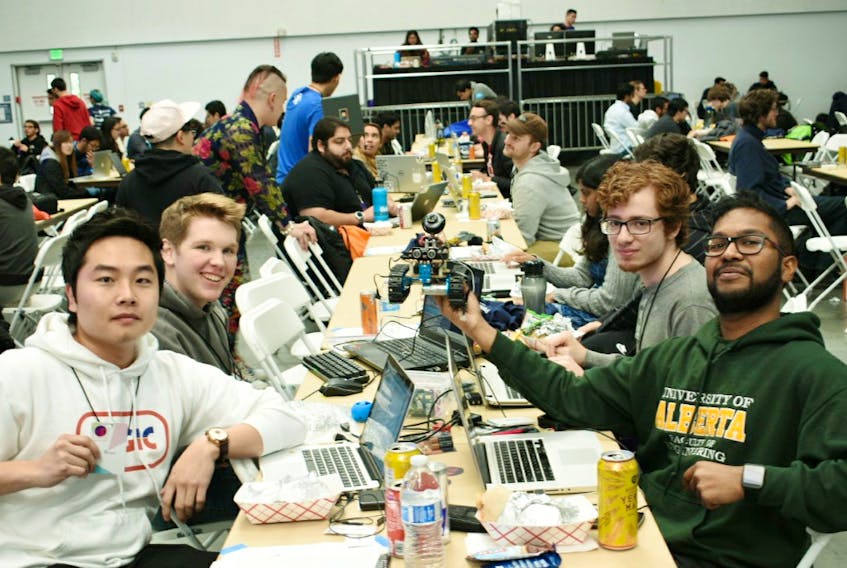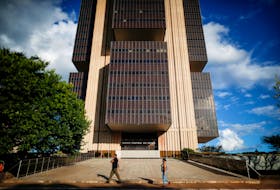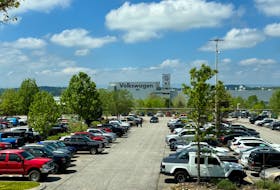In recent years, more and more Memorial University engineering students have started gunning for work terms and, eventually, careers with the tech giants of Silicon Valley.
Second-year electrical engineering student Frank Walsh is among them.
“Undergraduates now, even in my year, all they can talk about, all they can think about is going to California and then coming back and building in Newfoundland.”
There have already been a few such success stories locally, most notably Adam Keating, the former team lead for Paradigm Hyperloop team, a combined unit of students from MUN, the College of the North Atlantic and Northeastern University in Boston. The product of Mount Pearl completed a work term with RefleXion Medical in 2016 and has since co-founded CoLab Software with Jeremy Andrews, who also completed a work term in Silicon Valley, with Tesla.
“A big message that Adam Keating tries to push is that MUN students can perform on an international level and we’re a very competitive university,” says Walsh. “I don’t think people realize that.”
While students from this province are being noticed, and in some cases specifically scouted, it’s a highly competitive market and getting a foot in the door still requires that students do what they can to make themselves stand out.
Walsh, who is completing a work term with Nokia in Ottawa, has been bolstering his resume by spending the last few months competing in hackathons in Canada and the United States.
(Hackathons are generally 24-hour design competitions where computer programmers and other technology-based students collaborate on software projects that have real-world applications.)
After attending a hackathon in Ottawa, another in Waterloo and a third in Pittsburgh, Walsh set his sights on SF Hacks hosted by San Francisco State University.
“I really wanted to win this one. I needed to prove myself where I wanted to work,” he says.
“Hackathons are typically sponsored by companies and what they’re doing is looking for talent. It’s easier than picking through a pile of resumes. They’re trying to see who can actually perform.”
After posting his profile to the event’s messaging service, he was contacted by University of Alberta electrical engineering student and robotics developer Megnath Ramesh, who had a concept for a security robot.
Once in San Francisco, they recruited another two members — Dan Cohen from Northeastern University and California State Polytechnic University-Pomona student Brian Cho — and the four set to work on creating the Paulie Blart Security Robot (PBSR). (The name is a portmanteau on movie titles “Paul Blart: Mall Cop” and “Wall-E”.)
In a blog post following the event, Ramesh described the PBSR as, “an entirely autonomous robot which patrols a room or any of its surroundings, looks for intruders and alerts the owner/security guard with the name and picture of the intruder.”
“We had the majority of the project done within eight hours, but then it took us the rest of the time just to integrate it all and we were pushing right up to the very last second to make sure it all worked perfectly,” says Walsh, who handled the artificial intelligence and machine learning aspect of the design.
Despite only three hours of sleep collectively and some stiff competition from teams out of Berkley and Stanford, the foursome was deemed to have the best product and claimed first place overall, which came with a $500 prize per team member.
They also claimed the best use of IBM Waston application programming interface award and the DJI-sponsored best hardware hack.
“It was a Cinderella story,” says Walsh.
While the prize money is nice for offsetting the travel costs, the true reward at such events is the resulting networking opportunities and face time with peers and employers.
Walsh says the judges were “blown away” with what the team was able to do in a short time.
“The guy from IBM, he couldn’t believe it. We were using their software package to do the machine learning and he couldn’t believe what we had done with the software, how we had trained it and how it worked.
“The guy from DJI couldn’t believe how we set up the workflow on the robot, the way we were communicating with the microcontroller and how we were making it go.”
As for the future of PBSR, Walsh says they’d like to keep going and develop an even more effective version.
“With the internet now, it’s so easy to contribute to a project even when everybody’s coming from four corners of North America.”
Twitter: kennoliver79









